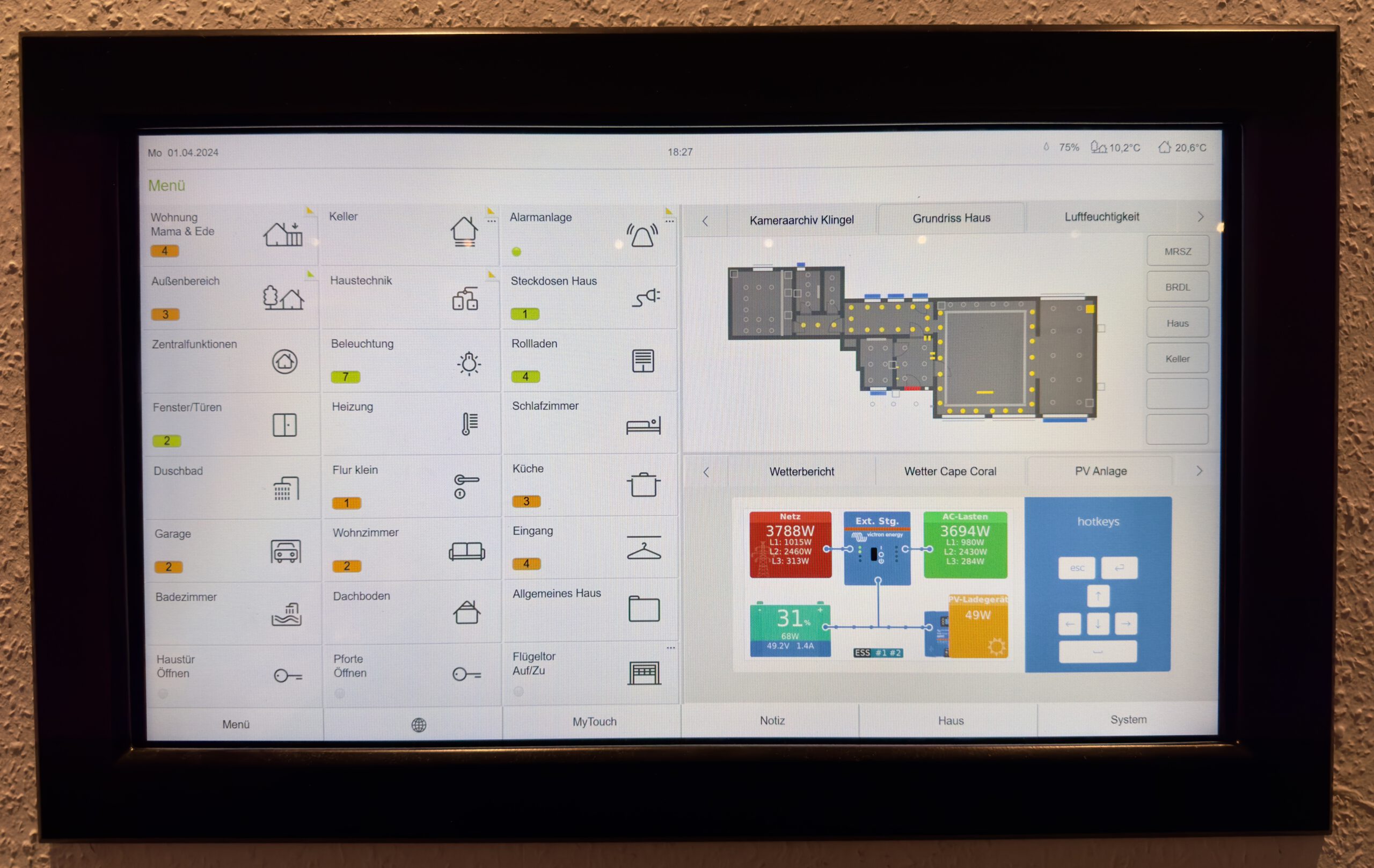KNX
KNX is a standardized communication protocol for building automation. It enables various components in a building, such as lighting, heating, ventilation, security systems, and more, to be controlled and monitored through a single network. Of course, from anywhere in the world, provided there is an internet connection.
The key advantage of KNX is its interoperability – products from different manufacturers that comply with the KNX standard can work together seamlessly. This allows for greater flexibility in designing and expanding smart building systems.
KNX uses a decentralized architecture, where devices communicate via a bus system. This means that even if one part of the network fails, the rest of the system can continue to operate.
With KNX, building owners and managers can achieve increased energy efficiency, improved comfort, and enhanced security while also benefiting from easier maintenance and scalability.

19″ KNX visualistion panel to control the whole house. With this flush-mounted touch display, you can control all functions of the smart home, such as lights, blinds, heating and air conditioning, status notifications of doors and windows, pool temperatures, and much more. Video cameras are also integrated into this display. All functions are compact and smartly operable from one place.
An example of a smart light switch in a sleek glass design with touch functionality. All buttons and the display are fully programmable and can control any function.


 using WordPress and
using WordPress and